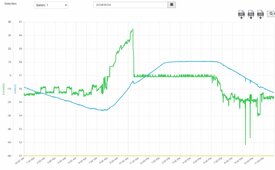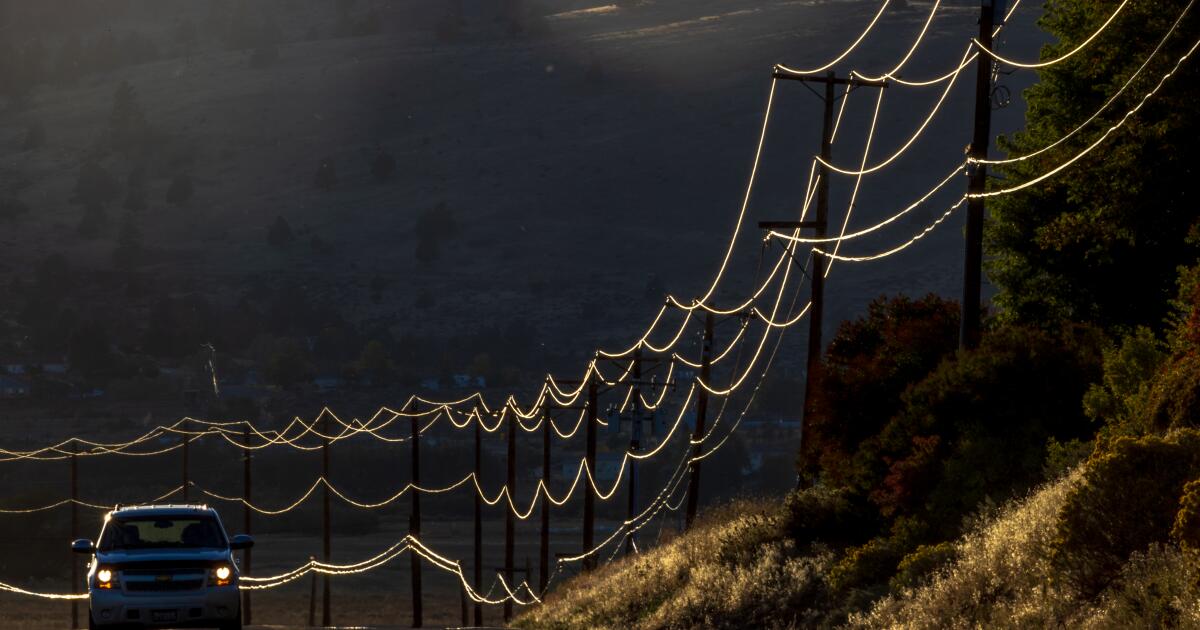Sorry for this LONG post. I kept walking away from the compute and doing other things today, so I didn't totally stay on track typing it up.
We just switched to the higher summer rates.
On Peak 4 pm to 9 pm Weekdays $0.60
Mid Peak 4 pm to 9 pm Weekend $0.48
Off Peak 9 pm to 4 pm next day $0.37
Now as a low user, we do get a $0.10 discount on the first 400 KWHs a month. I never go over that, so all my rates are $0.10 less than those rates. But the difference between rats is the same amount, not percentage though.
My current battery system programming uses almost all of my extra solar production from my Enphase microinverters until the battery voltage reaches 56.5 volts. While the sun is up and the battery is less than 56.5 volts, the controller adjusts the charge current to keep the power export under 60 watts. 56.5 volts on my battery bank works out to only 80% SoC. This tells the XW-Pro to stop charging, and then all of my extra PV solar power begins exporting to the grid. Today, this export exceeded 2,500 watts for a while and exported well over 15 KWHs, but most of that export happens from 1 pm to 4 pm at the lowest ToU rate. From 4 pm to about 6 pm, the solar power is dropping fast and I only export about 3 KWHs at the higher rate.
Currently, my additional 2,000 watts of DC solar panel only charges my battery bank. It is charging any time the sun is on the panels, so the battery is hitting that 80% SoC mark much faster on sunny days with over 1,500 wats of real charge power comin in to the system. But when the XW stops charging from the AC coupled system, the DC panels keep charging. My current settings bring the battery to about 95% SoC hitting 57.6 volts before it drops into Absorb then float mode. I have ot of those set to hold that 57.6 volts. Today, that battery held that full 95% SoC all the way to 6:30 pm. As the AC panels stopped producing enough power to run the loads in my house, the XW goes into "Grid Support" mode and begins exporting from the battery bank. But it still takes a bit until the battery is truly discharging with the DC system still pushing some energy in. On a good sunny day like today, running just on the existing PLC program, the Victron DC charge controller only captured 7.43 KWHs because it was only in Bulk for 65% of the day. It spent 5:13 in either Absorb or Float just holding the voltage. I can only estimate, but it probably could have pulled another 3+ KWHs if it had stayed in Bulk mode.
My plan is to add another routine in the PLC that will tell the XW to export some of the power coming in from the Victron charge controller. The "problem" I have is that my PLC currently ha no way of knowing how much power is coming in from the DC panels. I was thinking I could do a vey slow current ramp up when the battery voltage goes above 57.5 volts. And a very slow ramp down again if the battery voltage falls under 57.2 volts. If it drops to 57 volts even or below, it will revert back to just exporting what is being used back in my main panel. It should work with no additional wiring or sensors.
As long as my system is producing more power than I am using, I am fine with how it is working on the current billing. But if they do impose that $24+ a month, I can force my system to export a bunch more after 4 pm each evening. What this will do is run the battery a bit lower each night, so the next day, it will take longer to get to 57.5 volts. So it won't be exporting until later, meaning closer to 4 pm. And then my extra export mode can kick in to take advantage of the higher credit rate after 4 pm. There is nothing in my NEM 2.0 agreement that says I can't export after the sun is down. It only says 16 amps max export and 900 KWHs max export over a full month. That would be exporting 30 KWHs every day. That's not going to happen. My coding brain is not quite what it was 15 years ago, so it takes me a while to write and debug it to be stable to where I will leave it alone like it is running now. Here is what my XW battery did today.

The faster discharge rate tonight was from the window A/C unit running upstairs. We got into the 90s today, so it had to run to keep that room comfortable. But that kept the Central A/C from running at all. The spikes after 9 pm were my girlfriend using her hair dryer and then microwaving a snack before she left for work. The fatter dip about 10:30 pm was the fridge defrost cycle. Today, the battery only dipped to 54.4 volts. It can safely run all the way down to 48.0 volts without hurting the cells at all. But I do know the XW battery voltage is showing a bit high. You can see it hitting 58 volts for over 4 hours. At the battery box, it never actually goes over 57.7 volts. The Victron is in float as a 57.6 volt setting, but it can creep a little above that. Since these are NMC cells, the voltage is a decent indicator of State of Charge. That low of 54.4 volts is about 72% SoC. So I only used from 95 down to 72, or just 23% of my battery capacity from 6 pm the evening before to 8 am when the sun came up this morning. Then the house ran direct from the Enphase solar panels all the way to 6 pm again.
If I manage to export another 20% of my battery capacity, that would be down to about 52% or 50.5 volts. That is off the bottom of this graph. It would take it well past 2 pm before it starts exporting the power. This would mean exporting about 6 KWHs more from battery each night in the high rate ToU time. At the difference of $0.23 at best, it would be a savings of $1.38 each day. x 30 days = $40 a month on cool but sunny days. Maybe 1/3 of the year, so 4 months? = $160 a year. This alone could cover about 1/2 of the $24 a month fee.


www.latimes.com


m.themadisonrecord.com

m.themadisonrecord.com



